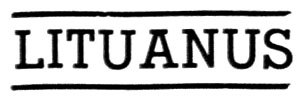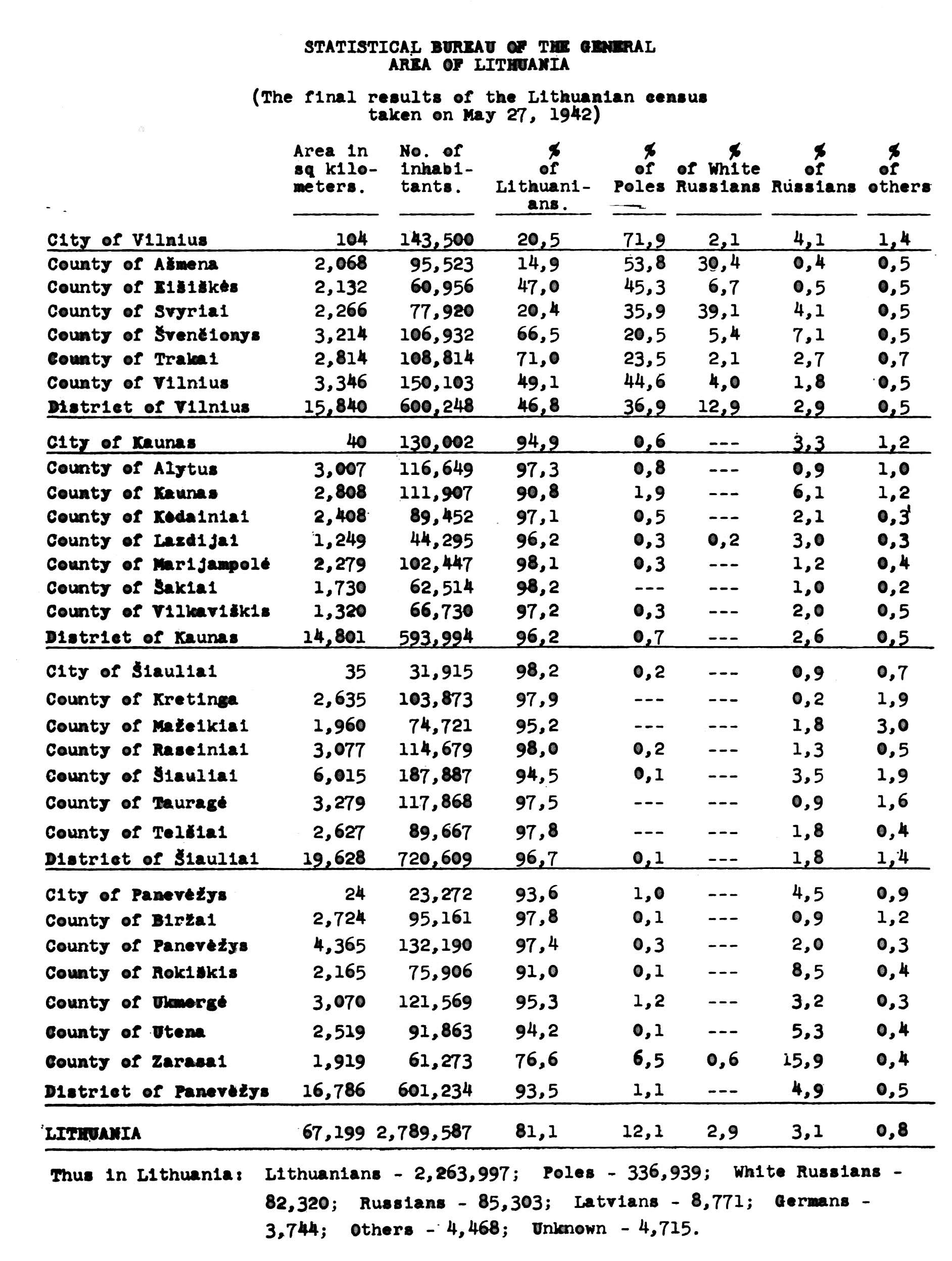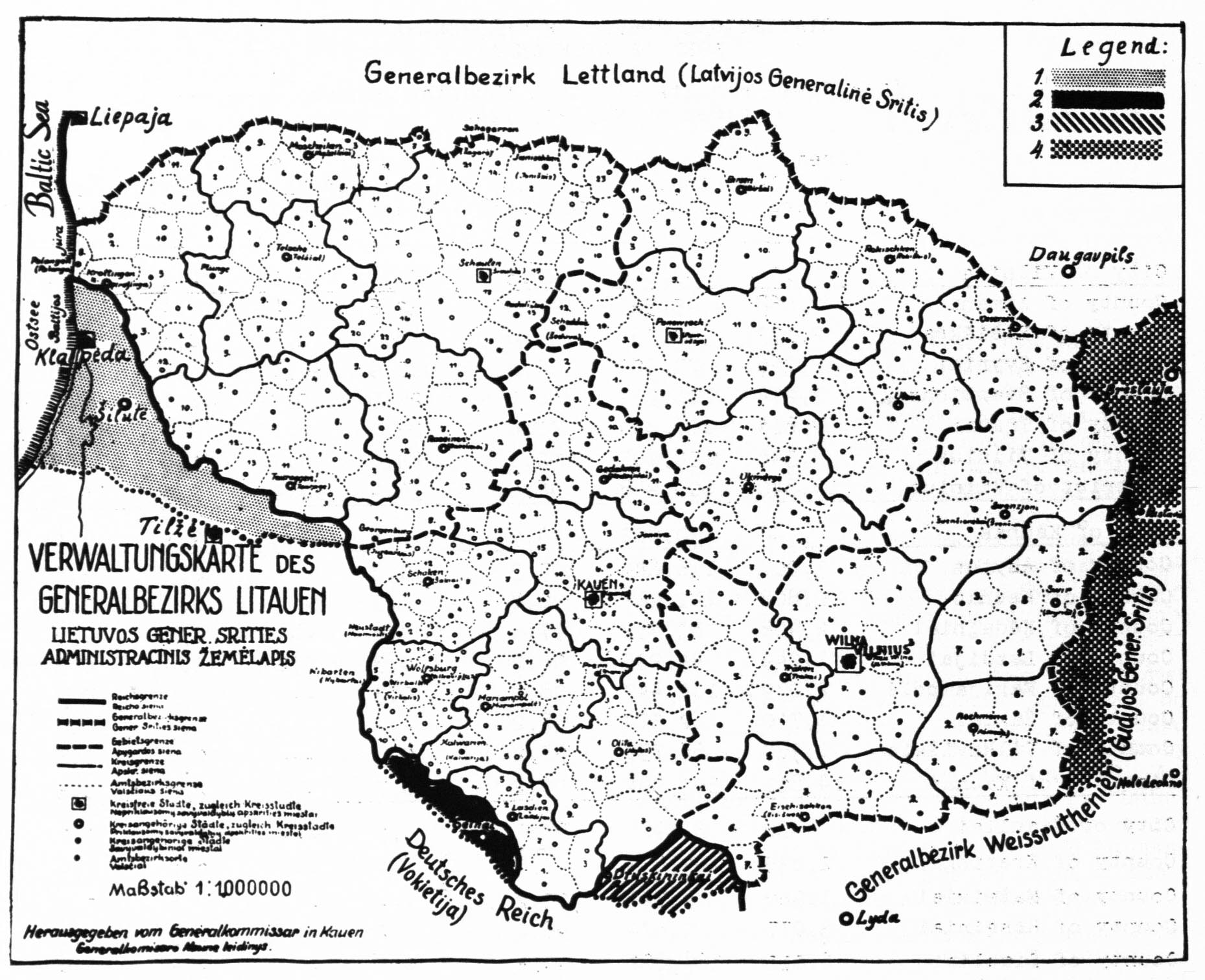
Managing Editor P. V. Vygantas
 |
www.lituanus.org |
|
Copyright
© 1957 Lithuanian
Students Association, Inc.
March,
1957 No.1(10)
Managing Editor P. V. Vygantas |
|
CHANGING POPULATION IN LITHUANIA
DR. KAZYS PAKŠTAS
Prof. Dr. Kazys Pakštas has studied at various American and Swiss Universities, received his doctorate from the University of Freibourg. Former chairman of the Department of Geography at Kaunas University, he has also tauqht at Carleton College and Duquesne University. Presently vicechair-man of the Executive Committee of the Christian Democratic Union of Central Europe, he has traveled extensively, and is the author of many books and articles.
Key to the survival of any nation conquered by the Soviets is in the
size and character of its population.
By the dully ratified international treaties of 1920-1924, Lithuania received territory comprising 88,111 sq. kilometers or 34,019 square miles. The population of this area in 1914 was estimated at 4,325,000. The First World War (1914-1918) and the Wars of Lithuanian Independence, with the accompanying epidemies and hunger, reduced that population by one million: for 1923 it might be estimated at 3,316,000.
The average annual natural increase of the population in Lithuania for the period 1923-1937 was 11.5 per thousand, and in some years reached 13.0 per thousand. This biological resistance increased Lithuania's population to 4,144,000 in 1939. By the middle of June 1941, the population of ethnic Lithuania reached about 4,250,000 among whom were 2,550,000 Lithuanians, others being national minorities: Poles, Jews, Belorussians, Germans and Russians. (About one third of this ethnic Lithuania was occupied by Poland during the period 1920-1939).
The last population statistics in Lithuania were gathered by the German occupation authorities on May 27, 1942. These statistics did not cover all the territory of Lithuania. Victorious Germany annexed to her East Prussian province the territories of Klaipeda, Suvalkai and Gardinas (Grodno). The eastern districts of Lithuania (Lyda and Breslauja) were given to Belorussia. Thus, German military authorities reduced Lithuania to 67,199 sq. kilometers or 25,936 square miles; and subdivided it into four regions or "Gebiete": Vilnius, Kaunas, Šiauliai and Panevezys. In all four regions there were a total of 25 districts, each having from 4,000 to 188,000 inhabitants.
In this reduced Lithuania the Germans conducted a population census which has been kept secret ("Nur fuer Dienstgebrauch"). This secrecy suggests that statistics were not to be used for propaganda purposes, but should be reserved for study and resarch, implying a greater degree of veracity. A copy of these statistics has been obtained by the Lithuanian underground and is published here in abbreviated form.

 |
LEGEND OF THE MAP:
|
This population census did not include administrative (military and civil) personnel and the Jews driven into ghettos and destined for extermination. But it includes score of thousands of Russian war prisoners at that time working on Lithuanian farms and in the cities.
The natural increase of the Lithuanian population during the war (1942-1943) was quite normal, amounting to about 1.1% annually. Taking into account this normal increase, the present population of Sovietized Lithuania could be estimated for 1955 at 3,700,000, with the percentage of ethnic Lithuanians 77% or 2,845,000. This estimate has been calculated for the territory once more reduced by the Soviet colonial policy makers. The Soviets separated from Lithuania her eastern districts of Asmena (Oshmyany) and Svieriai (Svir'h Thus, Sovietized Lithuania has at present only 65,197 square kilometers or 25,172 square miles.
For the first time in seventeen years Soviet official authorities have published seme data on the population of Russia, including her colonial possessions (See: Narodnoye Khozyaystvo SSSR by the Central Statistical Office, Moskva, 1956). According to those sources, the population of Lithuania was 2,700,000 in April 1956. From other sources we know, that the percentage of ethnic Lithuanians is about 80%; of Russian colonists about 14% and of local national minorities about 6%.
The autochtonous (native or indigenous) population in 1956 was about 2,470,000. In 1941 (June) the same type of population within the present boundaries was 3,238,000. By the annual growth between 1941 and 1956, this number should have risen to about 3,470,000 in 1956, but there are actually only 2,470,000. And that means that the genocidai practices of Russia and Germany resulted in a total loss of 1,270,000 human lives. The present autochtonous population of Lithuania has no chance to increase, as this would run counter to the colonial demographic policy of the Soviets.The Soviet policy is to deport or force the emigration of a number of the population about equal to country's average annual natural increase.
German statistics of 1942 and our estimate for 1956 show the following liguistic
linguistic
subdivision of the population of Lithuania:
| 1942 census | 1956 Estimate | |
| Lithuanians | 2,263,997 | 2,160,000 |
| Poles | 336,936 | 86,400 |
| Belorussians | 82,320 | 21,600 |
| Russians | 85,303 | 378,000 |
| Other | 21,028 | 54,000 |
| Total | 2,789,587 | 2,700,000 |
The principal causes of these radical charges are:.
The largest cities of Sovietized Lithuania are: Vilnius 300,000, Kaunas 195,000, Klaipeda 80,000 and Šiauliai 50000. The Lithuanian element is strongest ir. Kaunas and Šiauliai where they are in a majority. Klaipeda (the main port) and Vilnius are colonized by imported Russians up to 50%. The autochtonous population of Vilnius (about 138,000) is composed of about 33% Lithuanians, 7% Poles, and 6% Jews; about 54% are imported Russian colonists.
The German minority in Klaipeda (Memel) and in a few other western cities totally disappeared, having been deported to Siberia or escaping to Germany.
In respect to the geographical distribution of the disastrous loss of population in Lithuania, it seems that the western part (west of Dubysa River) lest a very small part of the autochtonous population; the largest middle sections of the country lost about 20%; and the eastern part or Vilnius region suffered most from the Soviet regime, losing about 30% of the autochtonous population.
The African and Asian colonies of
Europe were partially protected by their torrid climate from
imperialist colonization and they remained colonies of exploitation.
The Baltic and Ukrainian colonies of Russia are in much greater danger
as their climate and their soils offer very favorable conditions for
Russian colonization, after the local population is thinned out by
deportations and liquidations and after the land or industry is
expropriated for the benefit of the ruthless master-race.
"I wish to tell the representatives who are listening to me that with ezch passing day the growing desire of the USSR for universal expansion becomes more apparent. Geneva and the "spirit of Geneva" are nothing more than an attempt to deceive the unwary. The USSR has given up nothing; neither before nor since Geneva. Anything that is of advantage to it, that makes its position stronger and enables it to destroy the ideals of freedom and democracy, will help to enslave the world..."